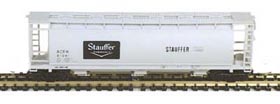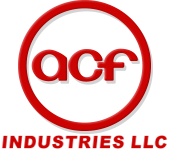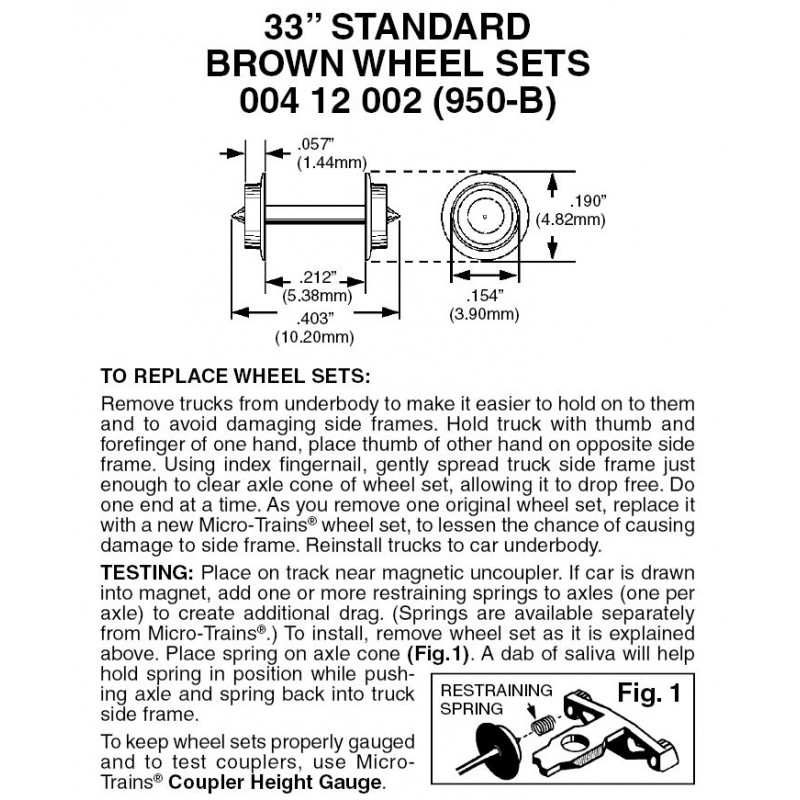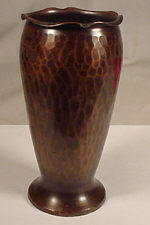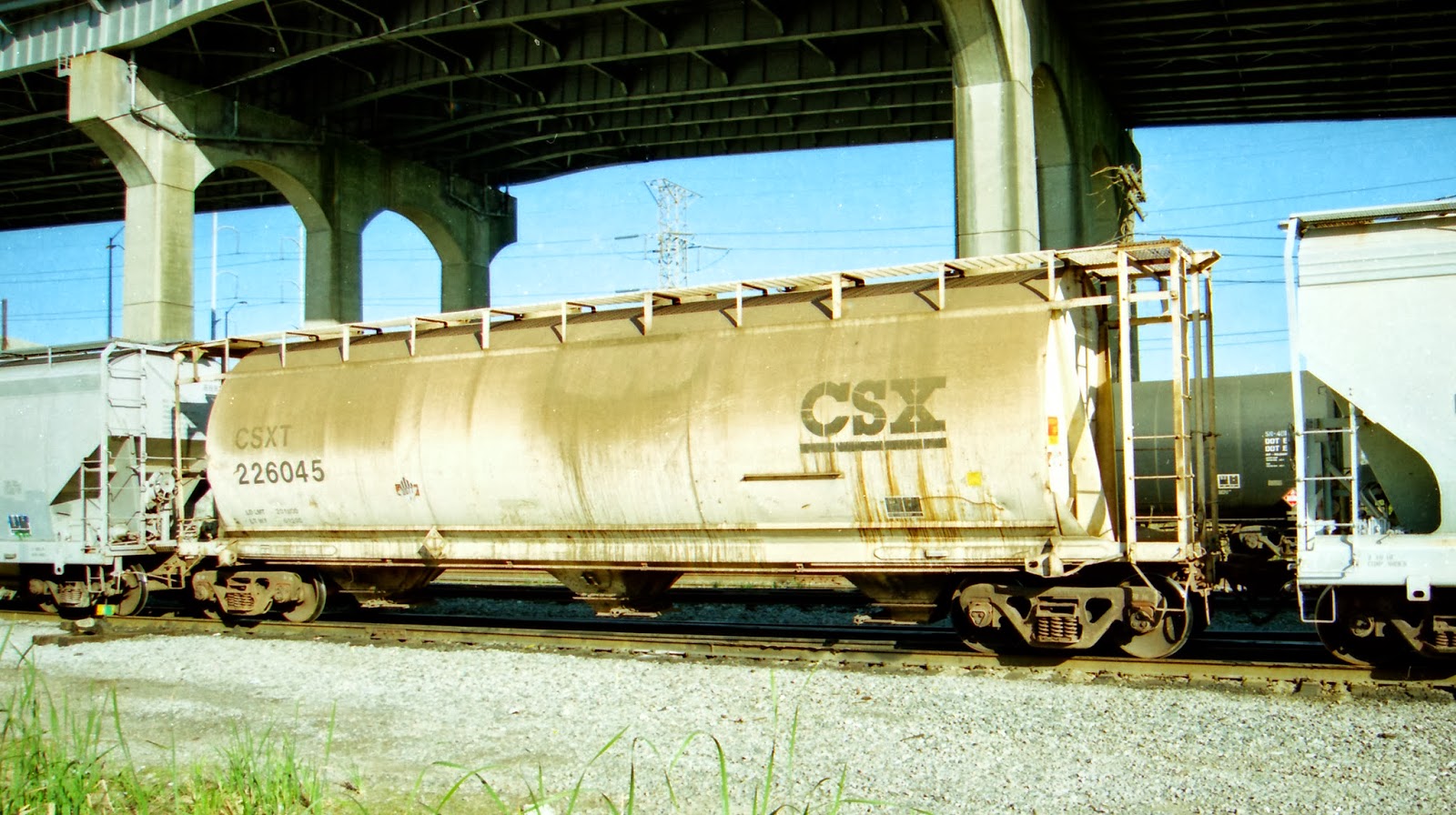Bowser - 37274 - Covered Hopper, 3-Bay, Cylindrical - Stauffer Chemical - 61041
| Stock Number | 37274 |
| Brand | Bowser |
| Manufacturer | Bowser |
| Body Style | Delaware Valley Covered Hopper 3-Bay Cylindrical |
| Prototype Vehicle | Covered Hopper, 3-Bay, Cylindrical (Details) |
| Road or Company Name | Stauffer Chemical (Details) |
| Reporting Marks | ACFX |
| Road or Reporting Number | 61041 |
| Paint Color(s) | Gray |
| Coupler Type | Rapido Hook |
| Wheel Type | Injection Molded Plastic |
| Wheel Profile | Small Flange (Low Profile) |
| Release Date | 1998-07-01 |
| Item Category | Rolling Stock (Freight) |
| Model Type | Covered Hopper |
| Model Subtype | 3-Bay |
| Model Variety | ACF Cylindrical |
| Prototype Region | North America |
| Prototype Era | NA Era IV: 2nd Gen Diesel (1958 - 1978) |
| Scale | 1/160 |
Model Information:
This model was developed by Delaware Valley Freight Car Corporation. The tooling was purchased by Bowser in 1998 and has been re-released several times since it was acquired. The body style has also been sold by Eastern Seaboard Models under the ESM branding. The model is available in both 3-Bay and 6-Bay variations.
Prototype History:
ACF introduced their roundish cylindrical hoppers in the early 1960s. The cars differed greatly from the ribbed sided hoppers of the era. They have been made in 3-bay and 6-bay variations. These cylindrical hoppers were superseded on ACF’s production line by the Centerflow in 1964, a revolutionary design that influenced later covered hopper types. In the late 60s or early 70s Canada came out with 4-bay covered hoppers that appear to be derived from ACF’s pre-Centerflow cylindrical hoppers. These cars were used by CN, CP and various smaller Canadian shippers. There is some question as to why the Canadian builder based their design off the older cylindrical and not ACF’s newer Centerflow. It was likely a patent issue and copying it could have triggered legal action against the Canadian builders. There are also certain structural design differences between the cylindrical and centerflow cars and perhaps the decision to copy the cylindrical was based on the greater volume capacity of the cylindrical design.
Road Name History:
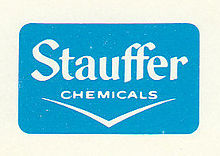 Stauffer Chemical Company is a former American chemical company which manufactured herbicides for corn and rice. It was acquired by Imperial Chemical Industries from Chesebrough-Pond's Inc. in 1987. In 1987, Stauffer's head office was in Westport, Connecticut. Late that year, Imperial sold Stauffer's basic chemicals business to Rh?ne-Poulenc S.A.
Stauffer Chemical Company is a former American chemical company which manufactured herbicides for corn and rice. It was acquired by Imperial Chemical Industries from Chesebrough-Pond's Inc. in 1987. In 1987, Stauffer's head office was in Westport, Connecticut. Late that year, Imperial sold Stauffer's basic chemicals business to Rh?ne-Poulenc S.A.
The company was founded in 1886 in San Francisco as a partnership between two young Europeans; a German, John Stauffer, Sr., and a Frenchman, Christian de Guigne. Ships exporting borax to Europe used sulfur as ballast. This ballast/sulfur became the inexpensive raw material for the newly formed company. The company was incorporated by John Stauffer, Sr., who died on March 4, 1940 at the age of 78.
In 1931, the company announced plans for a new manufacturing subsidiary, the Pacific Hard Rubber Company. Hans Stauffer, nephew of founder John Stauffer, Sr, who joined his uncle at Stauffer Chemicals in 1920 and who retired as president in 1967, died in 1986.
John Stauffer Jr., director emeritus of the company and son of the company's founder, died in 1972. The John Stauffer Laboratory for Physical Chemistry, the John Stauffer Chemistry Building at Stanford University, and the John Stauffer Science Center at Whittier College are all named after him.

The company was founded in 1886 in San Francisco as a partnership between two young Europeans; a German, John Stauffer, Sr., and a Frenchman, Christian de Guigne. Ships exporting borax to Europe used sulfur as ballast. This ballast/sulfur became the inexpensive raw material for the newly formed company. The company was incorporated by John Stauffer, Sr., who died on March 4, 1940 at the age of 78.
In 1931, the company announced plans for a new manufacturing subsidiary, the Pacific Hard Rubber Company. Hans Stauffer, nephew of founder John Stauffer, Sr, who joined his uncle at Stauffer Chemicals in 1920 and who retired as president in 1967, died in 1986.
John Stauffer Jr., director emeritus of the company and son of the company's founder, died in 1972. The John Stauffer Laboratory for Physical Chemistry, the John Stauffer Chemistry Building at Stanford University, and the John Stauffer Science Center at Whittier College are all named after him.
Brand/Importer Information:
On May 1, 1961, Bowser was purchased by Lewis and Shirlee English and moved from Redlands, CA to their basement in Muncy, PA. The original Bowser Manufacturing Co first advertised in the model railroad magazines in November 1948. At that time, the company had only one (HO Scale) engine, the Mountain, which had a cast brass boiler that is no longer available. It was sometime later that Bowser (Redlands) developed the NYC K-11 and the UP Challenger. The molds were made by K. Wenzlaff who introduced himself at the MRIA Show in Pasadena, CA in 1985 These two locomotives are still current production.
Bowser entered into N Scale in 1998 with their acquisition of the Delaware Valley Car Company, a manufacturer of N scale freight cars.
Bowser entered into N Scale in 1998 with their acquisition of the Delaware Valley Car Company, a manufacturer of N scale freight cars.
Item created by: Lethe
on 2015-10-02 10:12:21
Last edited by: CNW400 on 2020-05-25 19:19:21
If you see errors or missing data in this entry, please feel free to log in and edit it. Anyone with a Gmail account can log in instantly.
Last edited by: CNW400 on 2020-05-25 19:19:21
If you see errors or missing data in this entry, please feel free to log in and edit it. Anyone with a Gmail account can log in instantly.


